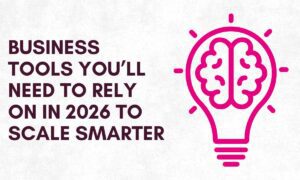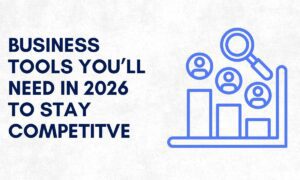In today’s fast-paced world, businesses are flooded with data — customer behavior, sales numbers, web traffic, social media engagement, and more. But data alone doesn’t drive growth. The real game-changer is how businesses analyze and use that data to make informed decisions. That’s where data analytics comes in.
Whether you run a startup or manage a large enterprise, leveraging data analytics can help you spot trends, identify problems, and uncover new opportunities. Let’s break down how businesses can harness the power of data analytics to make smarter decisions, reduce risks, and boost profitability.
From Raw Data to Real Insights
Every interaction a customer has with your business — visiting your website, clicking an ad, making a purchase — generates valuable data. But this data is only useful when it’s collected, organized, and analyzed effectively. That’s where data analytics tools and techniques step in.
With the right systems in place, businesses can track key performance indicators (KPIs), customer preferences, operational costs, and much more. This process turns raw numbers into insights driven by data that can guide smarter strategies.
For example, a retail brand can study customer purchase history to predict which products will sell best next season. A SaaS company can analyze churn data to improve customer retention strategies. These decisions aren’t made on gut feeling — they’re backed by data and increase the chances of success.
Identify Patterns That Drive Performance
Data analytics helps businesses identify patterns that aren’t obvious at first glance. You can examine customer buying behavior, seasonal sales trends, website bounce rates, or even employee productivity.
Let’s say your eCommerce platform shows a consistent drop in conversions every Friday evening. With proper analytics, you might discover that your website loads more slowly during peak hours due to server issues. That insight allows you to address the technical glitch, improve user experience, and ultimately increase sales.
Businesses can also segment their customers based on location, age, purchase history, or preferences. This allows you to tailor marketing campaigns for better engagement and higher ROI. When you understand what drives performance, it becomes easier to optimize strategies and resources.
Improve Operational Efficiency
Aside from marketing and sales, data analytics can transform how a business operates internally. From supply chain logistics to workforce scheduling, analytics tools help identify inefficiencies and reduce unnecessary costs.
For instance, a logistics company might analyze delivery routes and fuel consumption to find more efficient transportation paths. A retail store might track employee schedules against peak customer hours to improve staffing. These insights lead to better use of time, money, and human resources, all contributing to smoother operations.
Businesses that regularly track and measure internal performance often make faster, more accurate decisions because they understand what’s working and what’s not.
Make Customer-Centric Decisions
Understanding customer needs and preferences is critical to business growth. Data analytics allows you to gather real-time feedback, monitor behavior, and personalize customer experiences.
With behavioral analytics, you can see which pages on your website get the most visits, how long users stay, and where they drop off. This information helps you optimize the user journey and increase engagement.
Let’s say you’re running an online business and notice a high cart abandonment rate. Data analytics can help uncover the cause — maybe it’s high shipping costs, unclear return policies, or a complicated checkout process. Fixing these issues based on data, not assumptions, leads to happier customers and more conversions.
Support Strategic Planning and Forecasting
One of the most valuable uses of data analytics is in long-term planning. Businesses can forecast future trends by analyzing historical data and current market conditions.
For example, a company preparing for a new product launch can use past sales data to predict demand, plan inventory, and estimate marketing budgets. If you’re expanding into a new region, demographic data can help determine the best location or customer base to target.
Forecasting backed by data isn’t foolproof, but it significantly improves accuracy compared to guesswork. It also allows businesses to remain agile and adjust strategies when trends shift.
Real-Time Decision-Making
Modern data analytics platforms allow real-time data tracking, which is crucial in today’s dynamic market. Business owners no longer have to wait for monthly reports to make key decisions.
Whether it’s adjusting a digital ad campaign, changing pricing strategies, or launching a flash sale, having live data at your fingertips allows for fast, impactful decisions. This agility can be the difference between outperforming competitors or missing opportunities.
Data-Driven Culture = Competitive Advantage
Finally, building a data-driven culture is essential for long-term success. It’s not just about tools or dashboards — it’s about training teams to value and use data in everyday decision-making.
Encourage departments — marketing, sales, HR, and operations — to set measurable goals and use analytics to track progress. When employees at all levels embrace data-driven thinking, it leads to a more focused, transparent, and accountable workplace.
In a competitive landscape, the ability to make faster, smarter decisions gives businesses a serious edge. Companies that treat data as an asset tend to innovate faster, serve customers better, and adapt more easily to change.
Final Thoughts
Data analytics is more than just numbers — it’s about finding meaning in the chaos and using it to steer your business in the right direction. Whether you want to boost marketing results, streamline operations, or deliver a better customer experience, data can light the path forward.
By embracing data-driven decision-making, your business can grow with confidence, backed not by guesswork, but by solid evidence.



































